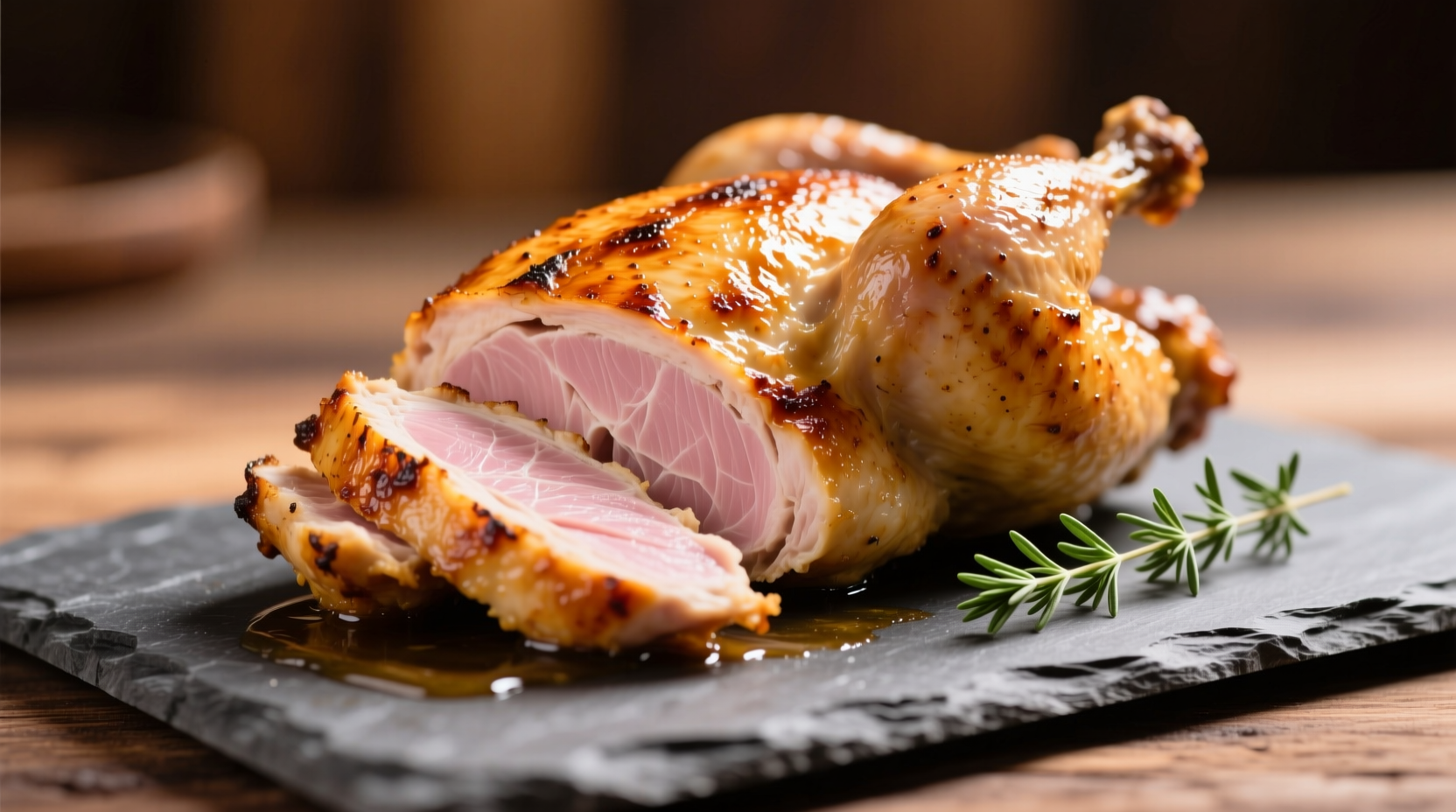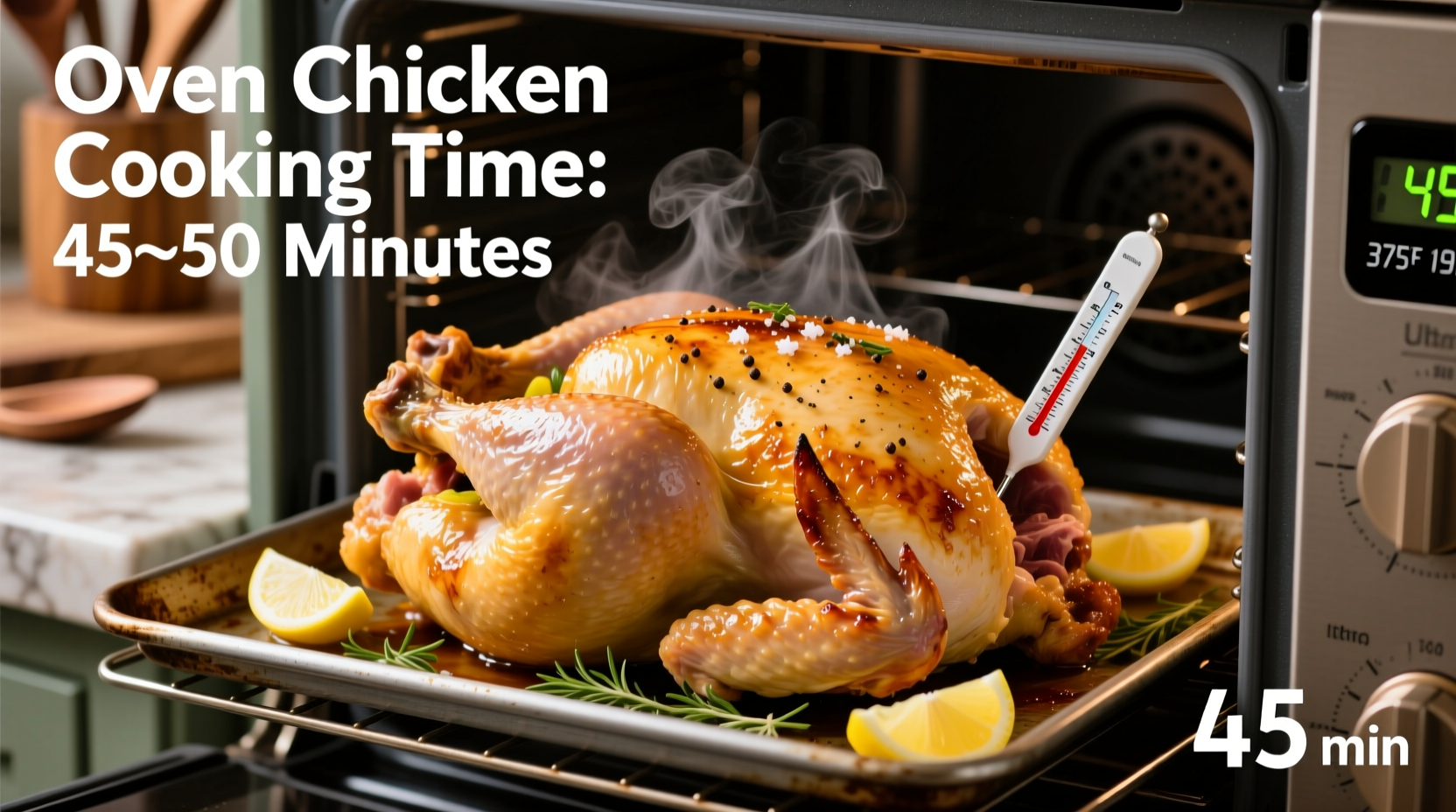Mastering Oven-Cooked Chicken: Your Complete Guide
Getting perfectly cooked chicken from your oven isn't complicated when you understand the science behind it. Unlike vague "cook until done" instructions, professional kitchens rely on precise temperature control and timing to achieve juicy, safe results every time. This guide gives you the exact cooking times you need based on your specific cut and oven temperature, plus the critical food safety information that prevents dry or undercooked chicken.
Why Cooking Time Varies: The Science Behind Perfect Chicken
Many home cooks struggle with oven-cooked chicken because they rely solely on time estimates without considering crucial variables. The United States Department of Agriculture's Food Safety and Inspection Service (FSIS) emphasizes that cooking time alone isn't reliable for determining doneness. Instead, you must consider:
- Chicken cut and size: Boneless breasts cook faster than bone-in thighs
- Starting temperature: Refrigerated versus room-temperature chicken affects cooking time
- Oven accuracy: Most home ovens vary by 25°F from the set temperature
- Rack position: Middle rack provides most even cooking
- Pan type: Dark metal pans cook faster than glass or ceramic
| Chicken Cut | Oven Temperature | Cooking Time | Internal Temperature |
|---|---|---|---|
| Boneless chicken breasts (6-8 oz) | 400°F (204°C) | 20-25 minutes | 165°F (74°C) |
| Bone-in chicken breasts (10-12 oz) | 375°F (190°C) | 35-40 minutes | 165°F (74°C) |
| Chicken thighs (bone-in) | 400°F (204°C) | 35-45 minutes | 175°F (79°C) |
| Whole chicken (3-4 lbs) | 375°F (190°C) | 1 hour 15 min - 1 hour 45 min | 165°F (74°C) |
| Chicken wings | 425°F (218°C) | 35-45 minutes | 165°F (74°C) |
Step-by-Step Oven Chicken Cooking Process
Follow this professional method for consistently perfect results:
- Preparation: Pat chicken completely dry with paper towels (moisture prevents browning)
- Seasoning: Apply oil first, then seasonings (oil helps spices adhere and promotes browning)
- Preheating: Always preheat your oven for at least 15 minutes before cooking
- Positioning: Place chicken on a rack over a baking sheet for air circulation
- Cooking: Insert an instant-read thermometer into the thickest part without touching bone
- Resting: Let chicken rest 5-10 minutes after cooking (temperature rises 5-10°F during rest)
Food Safety: The Critical Temperature Threshold
The USDA Food Safety and Inspection Service (FSIS) confirms that chicken must reach 165°F (74°C) to eliminate harmful bacteria like salmonella and campylobacter. This temperature is non-negotiable for safety, regardless of cooking method. Many chefs recommend cooking dark meat to 175°F (79°C) for optimal tenderness, as the higher fat content allows for this without drying out.
According to research published by the National Center for Home Food Preservation, visual cues like clear juices or firm texture are unreliable indicators of doneness. An instant-read thermometer remains the only accurate method to verify chicken is safely cooked.

Troubleshooting Common Oven Chicken Problems
Even with precise timing, issues can arise. Here's how to fix them:
Dry or Overcooked Chicken
This typically happens when chicken exceeds 170°F (77°C). To prevent this:
- Remove chicken at 160°F (71°C) and let carryover cooking bring it to 165°F
- Brine chicken breasts in saltwater solution for 30 minutes before cooking
- Cook at higher temperatures (400°F+) for shorter durations
Undercooked Chicken
If your thermometer reads below 165°F:
- Return to oven and check temperature every 3-5 minutes
- Avoid cutting into chicken repeatedly (loses moisture)
- Consider tenting with foil to prevent over-browning while finishing cooking
Advanced Techniques for Better Results
Professional chefs use these methods to elevate oven-cooked chicken:
- Reverse searing: Cook at low temperature (275°F) until 155°F, then finish at high heat for perfect browning
- Butter basting: Spoon melted butter over chicken during last 10 minutes for richer flavor
- Cold start: For whole chickens, start at 425°F for 15 minutes, then reduce to 350°F for even cooking
- Thermometer placement: Insert horizontally through the side for most accurate reading
When Timing Alone Isn't Enough: Contextual Considerations
Certain cooking scenarios require adjustments to standard timing guidelines. When cooking chicken in a convection oven, reduce cooking time by 25% or lower the temperature by 25°F. For frozen chicken, increase cooking time by 50% and check temperature frequently. High-altitude cooking (above 3,000 feet) requires longer cooking times due to lower atmospheric pressure affecting boiling points.
Food science research from the American Chemical Society shows that marinades containing acidic ingredients like lemon juice or vinegar can slightly accelerate cooking by breaking down proteins, potentially reducing required time by 5-7 minutes. However, this effect is minimal for oven cooking compared to methods like grilling.
Practical Tips for Consistent Success
Implement these professional kitchen practices at home:
- Always use an oven thermometer to verify actual temperature
- Let chicken sit at room temperature for 20-30 minutes before cooking
- Arrange pieces with similar thickness together on the same tray
- Rotate the pan halfway through cooking for even heat exposure
- Use a probe thermometer with remote monitoring for hands-free checking
Frequently Asked Questions
Here are answers to the most common questions about oven-cooked chicken:
How long to cook chicken at 350 degrees Fahrenheit?
At 350°F (177°C), boneless chicken breasts require 25-30 minutes, bone-in pieces need 35-45 minutes, and whole chickens need approximately 20 minutes per pound plus 15 extra minutes. Always verify with a thermometer that chicken reaches 165°F (74°C) internally.
Can I cook chicken straight from the refrigerator?
Yes, but cooking time will increase by 10-15% compared to room-temperature chicken. For more even cooking, let chicken sit at room temperature for 20-30 minutes before cooking. Never leave chicken at room temperature longer than 2 hours for food safety reasons.
Why does my oven chicken always dry out?
Chicken dries out when cooked beyond 165°F (74°C) or when moisture evaporates during cooking. Prevent dryness by removing chicken at 160°F (71°C) and letting carryover cooking finish the process, using a meat thermometer, and allowing proper resting time. Brining chicken breasts in a 1/4 cup salt dissolved in 4 cups water for 30 minutes before cooking also helps retain moisture.
How do I know when chicken is done without a thermometer?
While a thermometer is the only reliable method, you can check by cutting into the thickest part - juices should run clear with no pink color. However, this method is inaccurate and releases precious juices. The USDA strongly recommends using a food thermometer for safety, as visual cues can be misleading, especially with darker meat cuts.
Should I cover chicken when baking in the oven?
Generally, don't cover chicken when baking as this creates steam that prevents proper browning. Cover only if the chicken is browning too quickly before reaching safe temperature. For whole chickens, some recipes recommend covering with foil during the first half of cooking, then removing for browning. The exception is when making chicken in sauce, where covering helps ingredients cook together.











 浙公网安备
33010002000092号
浙公网安备
33010002000092号 浙B2-20120091-4
浙B2-20120091-4